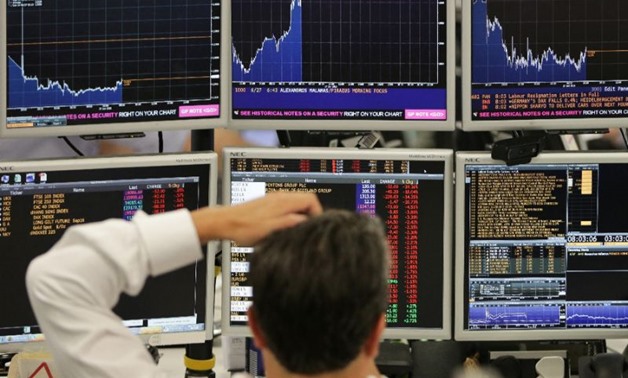
It's a man's world: Women's salaries still badly lag men's in British finance - AFP
LONDON - 29 March 2018: There had never been much doubt that in London's testosterone-fuelled financial sector female workers' salaries lagged far behind those of their mostly male colleagues.
Now this has been confirmed in black and white after the British government forced UK-based banks to publish their own so-called gender pay gaps.
Prime Minister Theresa May's Conservative government demanded that individual financial institutions reveal wage differentials between men and women across all employees -- from back-office staff to highly-paid traders and board members.
The results are unflattering for an industry that has long been marked by male-filled boardrooms and trading floors.
Men employed in London's 'City' financial district earn significantly more per hour than women excluding bonuses, according to the banks' data.
May is eager to see a change in the gender gap, or percentage difference between the average male salary and the average female salary -- in an eventual push toward pay equality, meaning the same money for a comparable job.
However, women still face an uphill struggle because nationwide across all sectors, British men earn 18.4 percent more per hour on average than women, according to official data from the Office for National Statistics.
Among retail banks, Royal Bank of Scotland and Lloyds Banking Group -- both rescued with vast amounts of taxpayers' cash during the global financial crisis -- have pay gaps of 37.2 percent and 33 percent, respectively.
Among institutions that are more focused on investment banking, the difference is even wider.
Britain's Barclays has a gap of 48 percent at its London-based investment bank unit. The equivalent is 55.5 percent at US giant Goldman Sachs.
The gap at HSBC's entire UK operations, including investment and retail, is 59 percent.
- Barclays sees 'progress' -
Karen Frank, chief executive of private banking at Barclays, told AFP that her company was slowly closing the gap but simply needed to attract more women into top positions.
"From time to time one can get a bit discouraged by the lack of progress in diversity across all industries," said Frank, who has spent more than 25 years working in financial services.
"The good part about what we are seeing at Barclays is that we have actually made definitive progress.
"In line with other sectors, the finance industry doesn't yet have enough women at the top and the top of organisations is where the highest paid salaries are. For now at least, the majority of these roles are occupied by men," she added.
Frank insisted that Barclays was on a mission to "encourage the next generation of women and the generation after that to come up through the ranks and occupy more senior positions".
Barclays has noted that the gender gap is driven by two factors: the higher proportion of men in senior jobs and the higher proportion of women in more junior positions.
- 'Shocking in 2018' -
Conservative lawmaker Nicky Morgan, chair of parliament's influential Treasury Committee, said recently of the massive gender pay gap at Barclays' investment banking unit:
"For this to be the case in 2018 is shocking," although she acknowledged that the bank had committed to supporting the progression of female employees into senior jobs.
At the same time, Frank insists that women must perform harder and better than men to achieve that goal.
"We have to have the confidence to speak our mind, take risks and set our bar high," she said.
Frank further told AFP in an interview: "My personal philosophy, and that of Barclays, is that we are a meritocracy.
"We want to see and encourage diversity but we will always hire the best person for a role and for our clients."

Comments
Leave a Comment